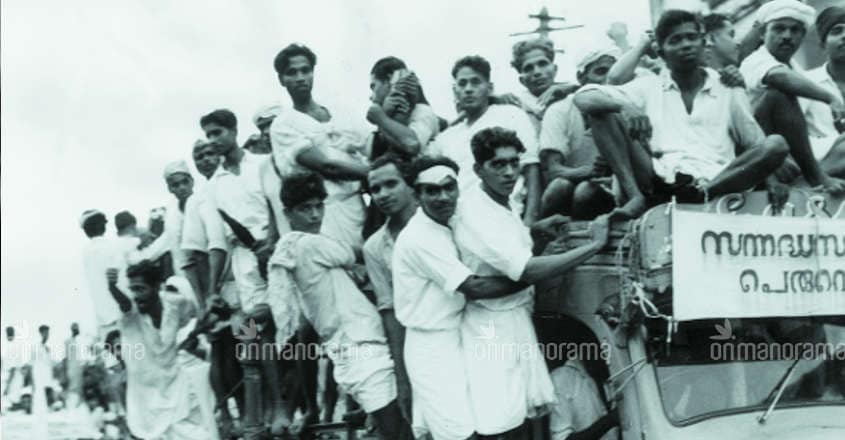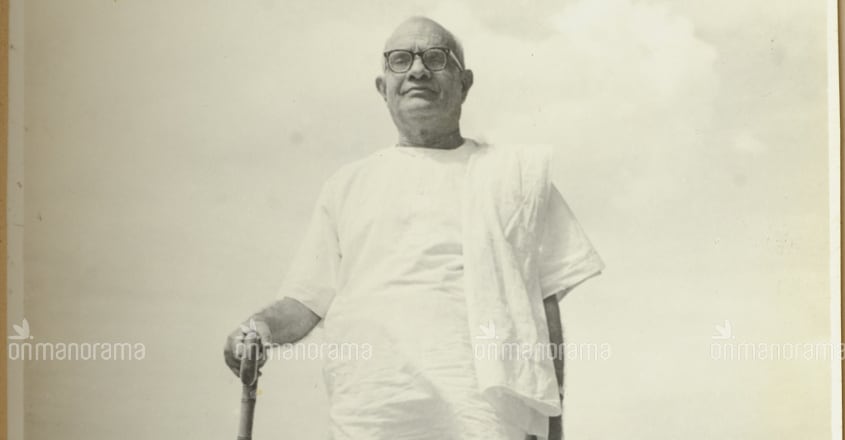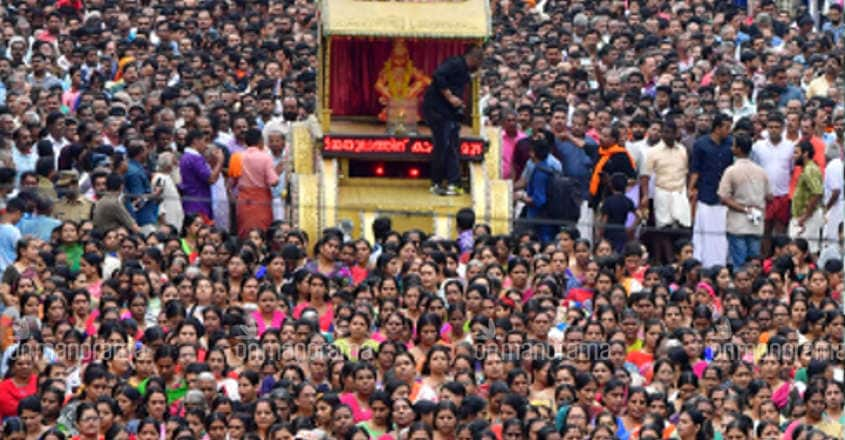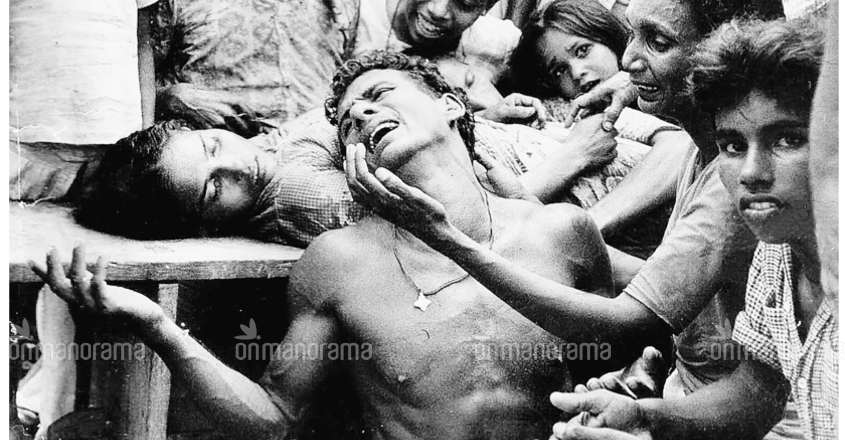Namajapa processions: BJP's 'Liberation Struggle' in Kerala?

Mail This Article
It is tempting to draw a parallel between the 'namajapa' processions (prayer protest) against the Pinarayi Vijayan government for its alleged haste to let women into Sabarimala temple and the Liberation Struggle to overthrow the E M S Namboodiripad government in 1959.
It looks as if the same pattern of events that had once triggered cataclysmic political and social churning is playing out more than half a century later. The similarities startling.
Provoked by reform
Both the protests have been triggered by what has been generally considered progressive steps. In 1959, the immediate trigger was the Education Bill passed in the Assembly on September 2, 1957. The legislation essentially sought to free schools from the iron grip of private managements.
This time, the protests were triggered by the Supreme Court's verdict on September 28, striking down a custom that prevented women of a particular age group from entering Sabarimala.

Tubelight response
Just as it was the case now with the Sabarimala verdict, some of the major players were not particularly bothered by the Education Act fifty years ago. The most prominent leader who did not share the Catholic church's jitters about the bill was NSS supremo Mannathu Padmanabhan, who later emerged as the towering figure of the Liberation Struggle. He had even gone on record saying it was a step in the right direction.
But there was a deep hurt the NSS leader was secretly nursing: the Agrarian Relations Bill that would dispossess the Nair community of their land. Soon, the tactician in him decided to club the grievances of both the church and his community. The result was a larger formidable front against the Communist government.
This afterthought had happened in the Sabarimala issue, too. Even before the verdict, the Sangh Parivar was generally in favour of the entry of women of all ages into the hill shrine. And just when the verdict came, BJP state president P S Sreedharan Pillai sounded supportive. Pillai took on an aggressive form later when he realised, like Mannam before him, that an issue that was not of much concern to the party could however be tactically used to push its larger agenda.

Beneficiaries on protest!
Perhaps the most intriguing similarity of these two events, far removed in time, is the position taken by the supposed beneficiaries. It was easy to view the Sabarimala verdict as a shot in the arm for women equality but, surprisingly, women had come out in large numbers against the verdict. The Education Bill of 1957 would have paid teachers more, levied less from students. But in the forefront of the 1957 struggle were teachers and students.
Lacks momentum

Still, despite the seeming similarities, the 'namajapa struggle' does not have the momentum to swell into a Liberation Struggle-like movement that could eventually overthrow the Pinarayi government. Here are five reasons.
Unlike in 1959, the SC verdict does not rattle entrenched power structures. The Education Bill of 1957 had the potential to seriously undermine the authority of the powerful Catholic church, which ran most number of educational institutions in the state. The Agrarian Relations Bill, too, dealt a deadly blow to the status quo; it wanted to do away with landlordism. A bitter fight to the end was inevitable.
There is no grand alliance of opposition parties as in 1959. All major political parties then — Congress Party, Praja Socialist Party, Muslim League and Revolutionary Socialist Party – stood united though none had any issues with land or education reforms. Fact is, both these reforms were first piloted, though unsuccessfully, by Congress regimes in the years before the formation of Kerala in 1957. Now, after the Sabarimala verdict, it is just the BJP that is in the forefront of the protest. Congress is struggling to somehow keep a distance from the 'prayer protest'. Others are nowhere to be seen.

The prayer protesters have not demanded the dismissal of the CPM-led government. Theirs is a relatively modest demand: the state government should move a review petition in the Supreme Court, at least through the Devaswom Board. Back in 1959, the dismissal of EMS ministry was the sole agenda. Vimochana Samaram, as the name itself suggests, was a naked call to cast out the Communists.

The 'namajapa' protesters are sworn to non-violence. Not a single untoward incident has been reported till now. The government also ensures that the protesters are not inconvenienced in any way. Back in 1959, the protests were violent. The police, too, retaliated in kind. Seven people, including a pregnant fisherwoman named Flory, were killed in a police firing in Angamaly on June 13, 1959. Prime Minister Jawaharlal Nehru, who was highly supportive of the Communist ministry to begin with, started showing his exasperation only after the violence escalated.
The American CIA is no more interested in Communists. Declassified documents had revealed the CIA's hand in fanning the Liberation Struggle. The Americans had managed to overthrow the Left governments that had sprung up in various parts of the world — in British Guyana, Guatemala, Congo and even in Iran. By the late 50s, Kerala's was the only one left.

Then American president Dwight D Eisenhower's concern about Kerala was revealed in 'Note No. 647', which finance minister T M Thomas Isaac had accessed from declassified US state department records and had used in his book “Vimochana Samarathinte Kaanappurangal'. In the note, Eisenhower writes that a report on Kerala sent to him should be handed over to Allen Dulles, the then director of the CIA, and to US embassy officials to prepare an action plan.
Patrick Moynihan, the US Ambassador to India in the seventies, has also spoken about a clandestine CIA operation to snuff out the Communist government in Kerala in his book 'A Dangerous Place'. This was later confirmed by Ellsworth Bunker, the US ambassador to India when the Liberation Struggle took place.
Now, it looks as if the CPM could take the help of Donald Trump to suppress internal uprisings. No American president in history has ever been as chummy with Communists — take the case of his ties with Russia's Vladimir Putin and North Korea's Kim Jong-un.



